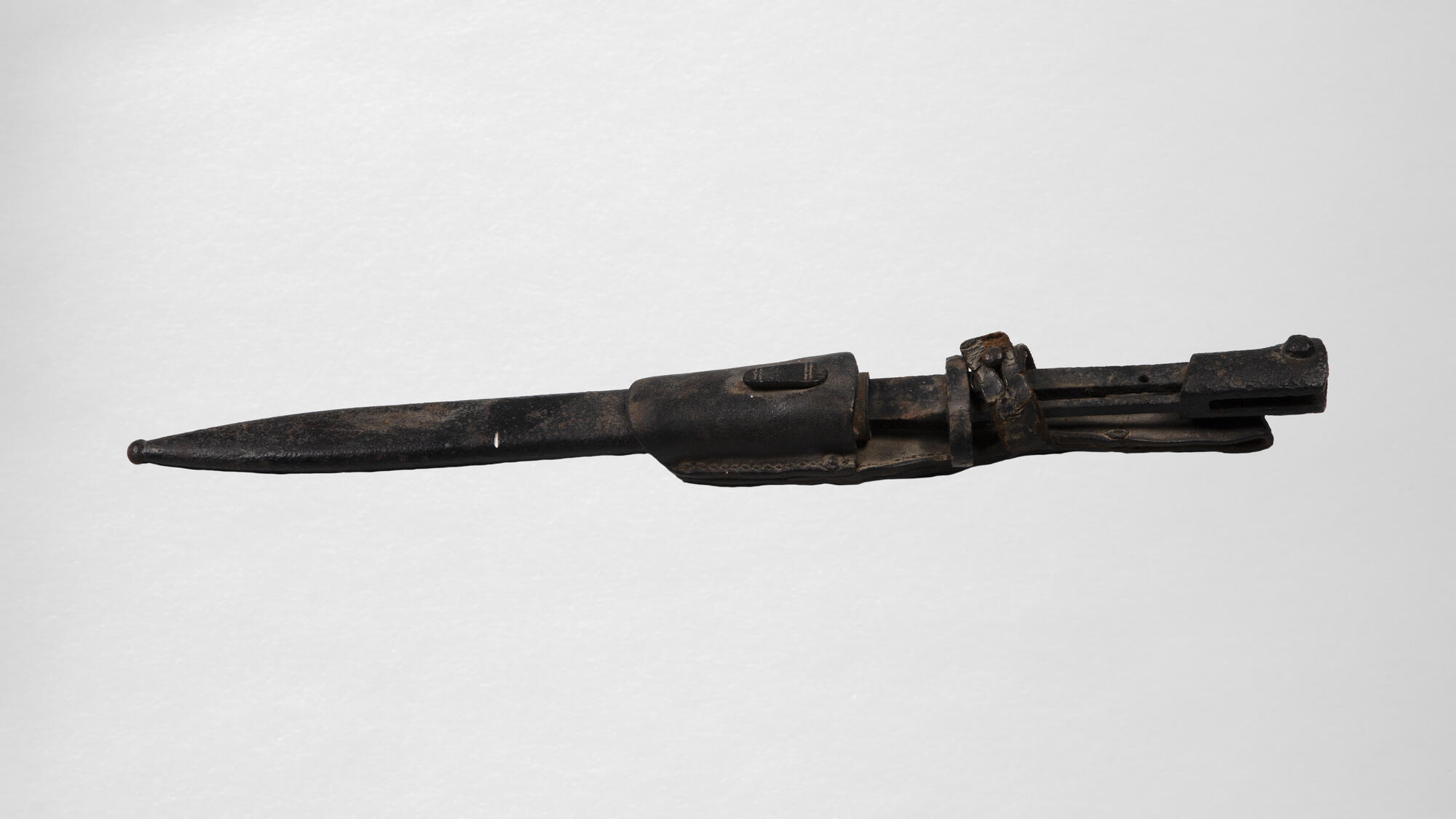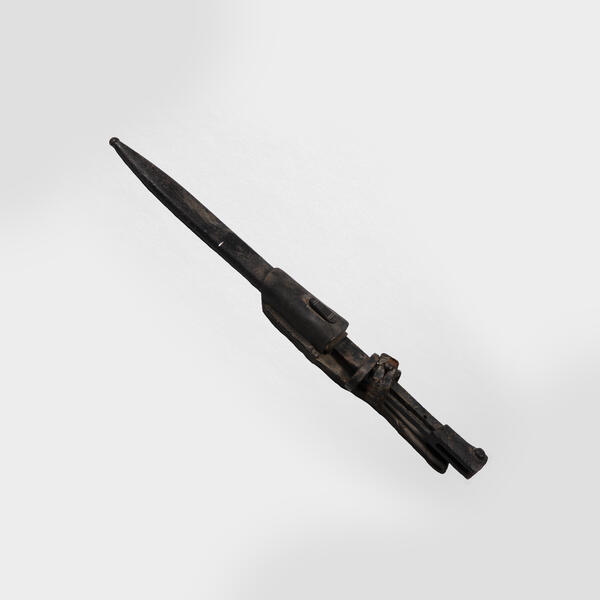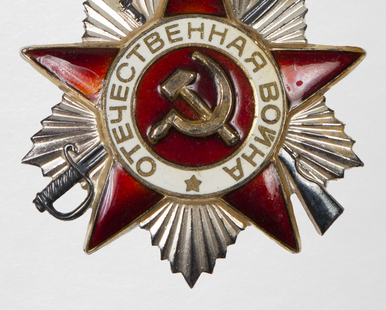The German army used both firearms and edged weapons during the Great Patriotic War. The latter was used for close combat, when the enemy was near, at arm’s length. Bayonet knives were the most popular type of edged weapon.
The collection of the Zimovniki Museum of Local History contains a German bayonet knife in a scabbard. Its design was valued for its simplicity and compactness. The weapon’s length is 43 centimeters including the handle.
German designers took a sample that had served the soldiers since 1884 as the basis of the military knife. The main difference of the new version was the special bakelite sidepiece, installed in the handle and attached with screws. To make the bayonet knife stronger, it was sharpened on one side, but the fullers — longitudinal grooves — were made on both sides.
The first knife for officers serving in the Wehrmacht police was created in Germany in 1920. It was part of a full-dress uniform and attached to a service weapon. Later, other groups of troops were supplied with bayonet knives.
Bayonet knives were marked with a special stamp or color, depending on the unit for which the weapon was intended. For instance, a special German security detachment used knives and scabbards with a black blade. That is why the unit was called the “Black Division”.
There were two types of bayonet knives: service and ceremonial ones. The production of paired sets, which included both types of knives, was set up for the German soldiers. The ceremonial knife had a different decoration than the service one. It had the head of an eagle — the symbol of the Third Reich — featured on its handle, and it also had an inlaid or etched blade.
Ceremonial bayonet knives could also be found during the Great Patriotic War. They were richly decorated with carved initials or whole phrases. Also, it was often possible to find a knife with an engraving and a slogan, where the war service was mentioned. The knife was supplied with a leather strap or loop to fix it on the mold.
The collection of the Zimovniki Museum of Local History contains a German bayonet knife in a scabbard. Its design was valued for its simplicity and compactness. The weapon’s length is 43 centimeters including the handle.
German designers took a sample that had served the soldiers since 1884 as the basis of the military knife. The main difference of the new version was the special bakelite sidepiece, installed in the handle and attached with screws. To make the bayonet knife stronger, it was sharpened on one side, but the fullers — longitudinal grooves — were made on both sides.
The first knife for officers serving in the Wehrmacht police was created in Germany in 1920. It was part of a full-dress uniform and attached to a service weapon. Later, other groups of troops were supplied with bayonet knives.
Bayonet knives were marked with a special stamp or color, depending on the unit for which the weapon was intended. For instance, a special German security detachment used knives and scabbards with a black blade. That is why the unit was called the “Black Division”.
There were two types of bayonet knives: service and ceremonial ones. The production of paired sets, which included both types of knives, was set up for the German soldiers. The ceremonial knife had a different decoration than the service one. It had the head of an eagle — the symbol of the Third Reich — featured on its handle, and it also had an inlaid or etched blade.
Ceremonial bayonet knives could also be found during the Great Patriotic War. They were richly decorated with carved initials or whole phrases. Also, it was often possible to find a knife with an engraving and a slogan, where the war service was mentioned. The knife was supplied with a leather strap or loop to fix it on the mold.



